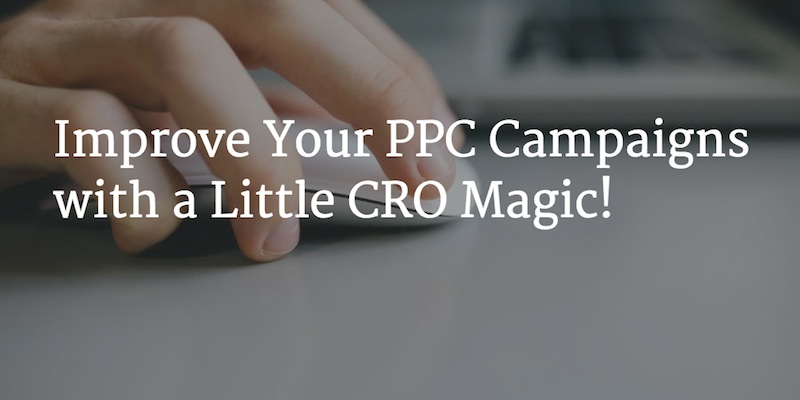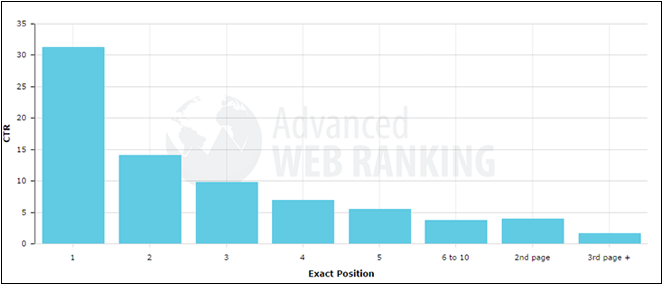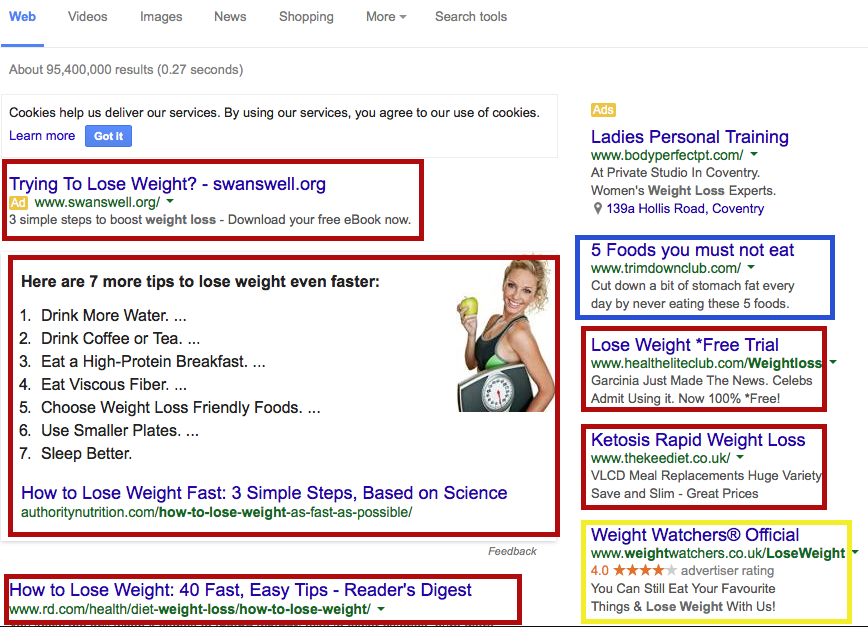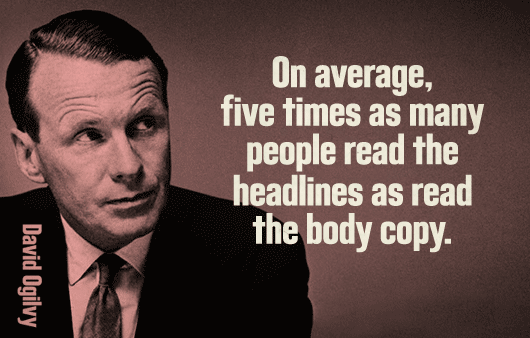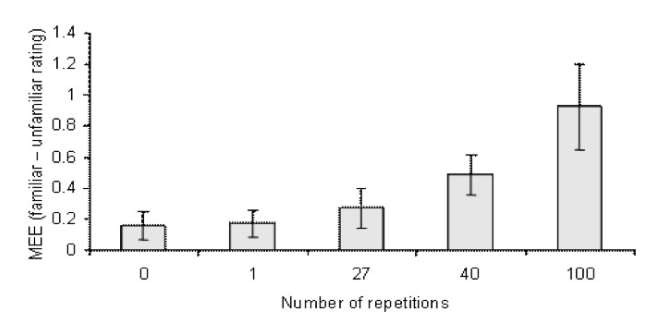There’s generally two goals when it comes to PPC.
- Increase the CTR of your adverts
- Reduce the cost per click / increase the average customer value of those who do click.
No matter how you cut it, it’s all to do with getting the most value for the budget you’ve got to play with. It’s why I find it so strange that I see so many generic, uninspiring and frankly boring PPC adverts when browsing the web.
It seems as though marketers out there think Google’s matching algorithms will take care of everything for them. All you need to do is create an advert and Google will handle the rest. Unfortunately, this just isn’t true.
Sure, Google’s algorithms might get your message in front of potentially interested prospects. But if the advert itself is crap, why should they click it? They won’t. I’d go as far to say that they’ll likely not even notice your advert.
Photo credit: Deathtostock
Properly optimizing your PPC adverts is the only way to get the bang for your buck you want. And contrary to popular belief, getting more traffic from PPC isn’t just about targeting the right keywords. It’s about relevancy and persuasion.
You’ve got to ensure that your adverts speak to the needs of your target audience and compel them to click. What’s the best way to achieve this? You guessed it, by taking a conversion rate optimization approach to the development of your PPC adverts.
Why Should You Take a CRO Approach to PPC?
Ad Rank is the importance Google assigns to the adverts in your campaign. The better your Ad Rank, the higher up the page they’ll appear. You may think that your ad turning up halfway down the page isn’t a huge issue. Well, I’ve got some bad news for you.
There’s a plethora of information out there which begs to differ with this. Let’s take a look at SERP placement. It’s long been known that the higher your SERP placement, the better CTRs you’ll see. Take a look at the graph below and the huge drop off between those in position one and two.
Image credit: Marketing Land
Position one gets more than double the amount of clicks than the result directly below it. On page position in the SERPs counts for a lot. When you’re trying to get the most out of your PPC campaign, you can’t afford to have your advert lost over halfway down the page.
So How Do You Increase Your Ad Rank?
As with any Google algorithm, the process is extremely complicated. However, if we boil it down to the bare essentials, Ad Rank is determined by how relevant your advert is to the needs of the audience.
There’s a whole mess of metrics that go into figuring out the relevancy. Google looks at the quality of your website, the CTR of your adverts and the correlation between keyword relevancy and what you’re offering.
In fact, the algorithm is so relevance focused that you can outperform competitors who are paying for higher bids. Here’s a direct quote from the Google Ad Rank page linked to above.
“So even if your competition has higher bids than yours, you can still win a higher position at a lower price by using highly relevant keywords, ads and extensions.”
When relevancy is one of the primary factors in determining the position of your adverts, it pays to know exactly what your audience wants. Thankfully, CRO is unbeaten when it comes to creating content that resonates with the key needs of your audience.
Let’s take a look at a few CRO steps to help increase the relevancy and impact of your PPC campaign.
Always Have a Hypothesis and Set Goals
That is one of the mistakes nearly all marketers make.
They know they want to increase their CTR but have no idea how or why. They take a stab in the dark, change a few things and watch the rates fluctuate. Sometimes this works in your favor, but even when it does you’ve no way to know what specific action caused the change and so have no idea how to replicate it.
Instead of taking a guesswork approach to your optimization you need to sit down and figure out what your goal is. Once you’ve got your goal, you need to decide on an action and draw up a solid hypothesis on the course you’re going to take.
Let’s map out what could be a basic goal and hypothesis for a PPC campaign.
We’ll imagine that for this campaign, the marketer is taking an extremely focused approach to PPC CTR. For a while now they’ve noticed that despite bidding on numerous relevant keywords they see a very low CTR. Their goal is simple: to increase that CTR.
They identify three potential issues that could be causing the low CTR.
- Poor Ad Ranking
- Non-Compelling Ad Copy
- Targeting the wrong keywords
After checking out each area, it appears that the biggest problem areas are one and two. Knowing that there’s little they can do to improve ad ranking beyond increasing relevancy, they decide on optimizing ad copy.
So a very basic hypothesis and goal might look something like the sentence below:
By improving advert copy, we expect to see a XX% increase in PPC advert CTR.
Having even a basic hypothesis like the above gives structure to your optimization campaign. You’ll start with a proper benchmark, know how close you are to achieving your pre-determined goals and will be able to measure accurately the influence of the changes you make.
Without taking the time to map out your goal and hypothesis, all your efforts are arbitrary guesses.
Capture Attention by Being Different
There’s a popular saying, “the nail that sticks out gets hammered”.
It’s a saying that is often meant to keep your head down and not to make a fuss. Well, with PPC advertising, you want to be the nail that sticks out.
Type anything into Google and look at the amount of adverts that pop up. Now look at how many of them conform to the same formulas and wording.
Take the below examples for the search “how to lose weight”:
Everything I’ve outlined in red takes the same step of building on the search term. We’re given a full selection of headlines all based on either the term “lose weight” or “weight loss”.
The effect is one that causes me to look over almost all of these elements, ad or not.
However, three elements on the page don’t follow this process. First is the advert from Weight Watchers outlined in yellow. Not exactly a persuasive advert, but I guess they might be able to skate through on their reputation alone.
Next up is the top positioned advert. “Ladies Personal Training.” I immediately ignored this advert because, well, I’m not a lady. Maybe they have an issue with their targeting parameters.
Finally is the advert in blue. The one that caught my eye. Instead of focusing on the key terms like every other advert on the page, it uses different copy that brings attention to a primary concern for those looking to lose weight. Eating.
It’s still highly targeted to the search term but stands out enough to attract attention. If I were going to click on any advert on this page, it would have been that one. Primarily because it stood out from the rest that roused my curiosity.
The success of your PPC adverts relies heavily on grabbing attention. You only have a few seconds to do so and by conforming to the same patterns as everyone else you risk your voice getting lost in the crowd.
The same tactic is often applied in creating CTAs that convert. By making them stick out from the page, they attract more attention and garner a higher CTR.
Think outside the box and refuse to conform to the established method and wording used by every other competitor out there.
But Being Different isn’t Enough
Ask any good copywriter what the most important aspect of their copy is and they’ll tell you it’s the headline. Sure standing out from the crowd with a unique PPC headline can help, but it’s also got to be persuasive.
The first step in many copywriter’s processes is to create the most compelling headline possible, without a compelling headline your content will often go ignored. You could have the most highly optimized page and the most relevant funnel in PPC history, but if your headline is trash, then no one’s going to read it.
The importance of headlines has long been known. Copywriting legend David Ogilvy said 80% of the people who read your headline won’t read the copy. That is why CROs spent an inordinate amount of time on split testing headlines and coming up with winning formulas.
Image Credit: Intelligent Link
You might wonder why I’m harping on about headlines in an article about PPC. Well, take a minute to look at the adverts mentioned in the previous section. Notice anything about them?
Yup, they only consist of two sections. A headline and a subhead.
Sure, stepping out of the box and coming up with a headline no one else is using can help you stand out, but is it doing so in a good way? Sometimes a headline isn’t used because, well, it doesn’t work.
That is where good old CRO audience research and headline testing come into effect. Rather than take the path well traveled you can use your CRO insights to understand the primary pain points and create a headline that stands out for all the right reasons.
There’s a lot of advice out there which advocates being different for the sake of being different. However, you want to be different and see significant gains in your campaign.
Follow the advice of great copywriters and prolific conversion rate optimizers to create a PPC headline that’s not only different but also guaranteed to convert like crazy.
Remarketing With PPC
Remarketing (sometimes referred to as retargeting) is a big deal in the conversion world at the minute.
The idea’s simple. By re-engaging prospects who fail to purchase or navigate away from your site, you drastically increase your chances of securing the sale.
What I find most interesting about the process is the psychological reasons for its success. The underlying principle is called the Mere-Exposure Effect. According to this principle, people tend to develop a preference for items simply because they’re more familiar with them.
By causing your adverts to show repeatedly to prospects who have seen them before or already visited your site should increase the likelihood of them purchasing from you. The more familiar prospects are with your brand, the more reputable you appear.
Image Credit: Marketing Land
When it comes to PPC, there are numerous ways you can segment your audience for retargeting. The process is quite involved and in depth and warrants an article all it’s own. Thankfully, the wonderful guys over at PPCHero.com have put together a comprehensive guide on how to organize and implement a PPC remarketing campaign.
Conclusion
PPC can be a great way for you drive traffic and conversions, however, creating a successful campaign is something of a minefield. Knowing this, many marketing managers take the path most traveled which results in boring, run of the mill adverts that fail to inspire or convert.
It doesn’t have to be this way. By taking a CRO approach to your PPC campaign you’ll not only set out the guidelines for creating a highly targeted and relevant campaign, but you’re setting the groundwork for high conversions later in your funnel.
A thorough CRO approach can create a beneficial cyclical process for your PPC campaign. Higher relevancy leads to a higher ad rank. Higher ad rank gets more clicks which leads to more conversions and continues to keep your ad on top of the rest.
What tricks have you found that have brought a high rate for your PPC adverts? Let us know your secret tactics in the comments below.
